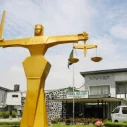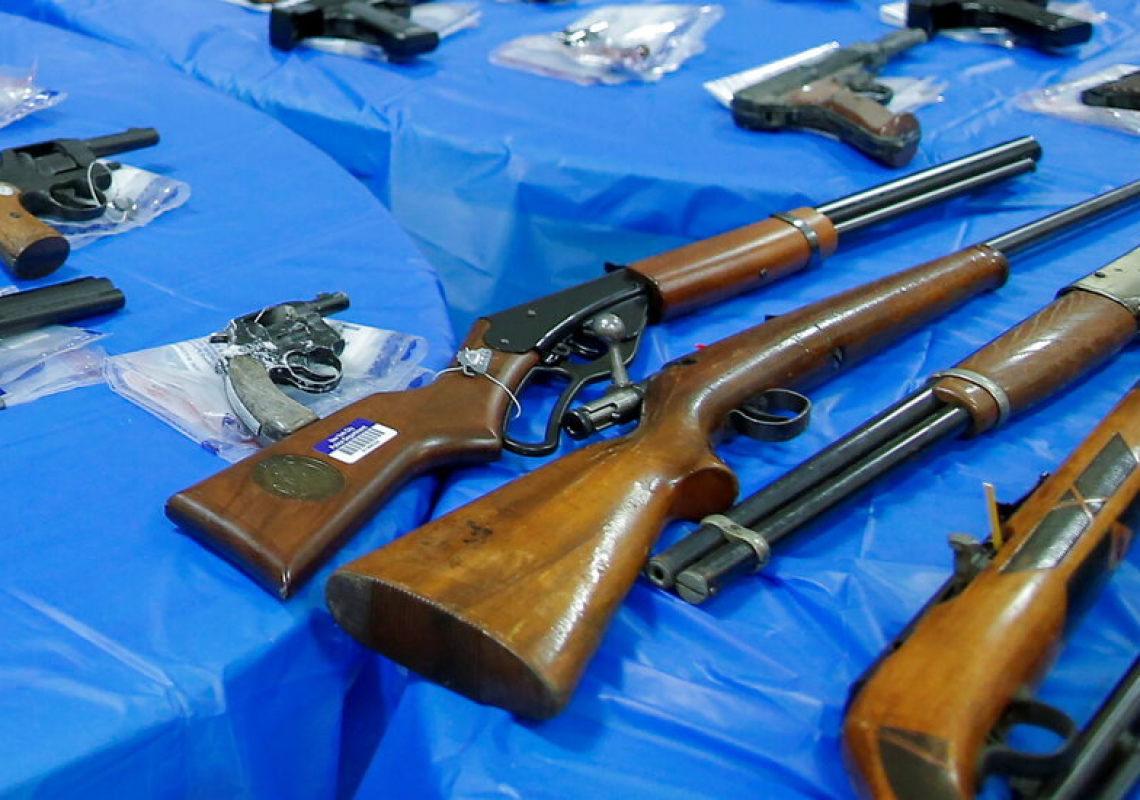Advertisement
Supported by
The law, which imposes strict limits on carrying guns in public, faced a skeptical reception from the Supreme Court on Wednesday.
Send any friend a story
As a subscriber, you have 10 gift articles to give each month. Anyone can read what you share.
transcript
“The reason I’m so confident that this regime is problematic on its face is because on its face, at least as interpreted by the highest court in New York, the requirement you need to show in order to carry concealed for self-defense, but not for hunting and target practice, is you have to show that you have a need for self-defense that distinguishes you from the generalized community, from the general community. What we’re asking for, I mean, one way to think about it is we’re asking that the regime work the same way for self-defense as it does for hunting.” “The difference, of course, you have a concealed weapon to go hunting. You’re out with an intent to shoot, say, a deer or a rabbit, which has its problems. But here, when you have a self-defense, just for whatever you want to carry a concealed weapon, you go shooting it around and somebody gets killed.” “With respect, Justice Breyer, that’s not been the experience in the 43 jurisdictions that allow their citizens to have the same rights that my clients are looking for. This is not something where we’re asking you to take some brave new experiment that no jurisdiction in Anglo-American history have ever done —” “Mr. Clement, may I — those 43 states that you’re talking about, most of them didn’t give unrestricted rights to carry in one form or another until recent times. Before recent times, there were so many different regulations. What it appears to me is that the history tradition of carrying weapons is that states get a lot of deference on this.”
By Adam Liptak
WASHINGTON — A New York law that imposes strict limits on carrying guns outside the home seemed unlikely to survive its encounter with the Supreme Court, based on questioning from the justices on Wednesday.
The law requires people seeking a license to carry a handgun in public to show a “proper cause,” and a majority of the justices seemed prepared to say that it imposes an intolerable burden on the rights guaranteed by the Second Amendment. But several justices seemed open to allowing the state to exclude guns from crowded public settings or other sensitive places.
The Second Amendment protects a constitutional right just as the First Amendment does, Chief Justice John G. Roberts Jr. said. People seeking to exercise either of those rights, he said, should not have to demonstrate to the government that they have a good reason or special need to do so.
“You don’t have to say, when you’re looking for a permit to speak on a street corner or whatever, that, you know, your speech is particularly important,” he said. “So why do you have to show in this case, convince somebody, that you’re entitled to exercise your Second Amendment right?”
At the same time, the chief justice was among the justices who asked whether guns could be barred at settings as varied as subways, protests, Yankee Stadium, Times Square on New Year’s Eve and college campuses in New York City.
The hearing “provided a road map for New York to follow,” said Adam Winkler, a law professor at the University of California, Los Angeles, and the author of “Gunfight: The Battle Over the Right to Bear Arms in America.”
“The justices appeared convinced that restrictions on guns in sensitive places were constitutionally permissible, with Times Square and the subway as potential illustrations,” he said. “Perhaps we will see New York loosen its permitting requirements but strengthening the restrictions on sensitive places to make it very difficult for carry in New York City.”
Paul D. Clement, a lawyer for the plaintiffs in the case, including two men who were denied licenses to carry handguns at all times, gave cautious answers to questions about restrictions on guns in sensitive places, saying those issues were not part of the dispute before the justices and should be resolved in future cases.
In general, though, and without defining what counts as “sensitive,” he said that “New York is entitled to have laws that say that you can’t have weapons in sensitive places.”
The main point, Mr. Clement said, was that “carrying a firearm outside the home is a fundamental constitutional right,” one allowed with few restrictions in 43 states. Those states, he said, included major cities like Phoenix, Houston and Chicago.
Justice Elena Kagan responded that “most people think that Chicago is, like, the world’s worst city with respect to gun violence.”
Justice Brett M. Kavanaugh said the court should limit its ruling to what he called “the permitting regime.”
“We don’t have to answer all the sensitive places questions in this case, some of which will be challenging no doubt,” he said.
Barbara D. Underwood, New York’s solicitor general, told the court that limits on guns in sensitive places would not be a complete solution.
“You end up having a very big difficulty in specifying what all the places are that have the characteristics that should make them sensitive,” she said. “It has an attractive quality to it, but in implementation, I think it would be unsuccessful.”
But Ms. Underwood’s defense of New York’s licensing system did not seem to satisfy a majority of the justices.
She said that “unrestricted permits are more readily available in less populated areas,” setting off a discussion of where it is most valuable to have a gun for self-defense.
“If the purpose of the Second Amendment is to allow people to protect themselves,” Chief Justice Roberts said, “that’s implicated when you’re in a high-crime area. It’s not implicated when you’re out in the woods.”
Ms. Underwood said it made sense to allow guns where there is little law enforcement presence. The chief justice asked, “How many muggings take place in the forest?”
Justice Samuel A. Alito Jr. asked whether people who work late in Manhattan — “it might be somebody who cleans offices, it might be a doorman at an apartment, it might be a nurse or an orderly, it might be somebody who washes dishes” — would be granted a license if they said they had a dangerous commute through a high-crime area.
“They do not get licenses, is that right?” Justice Alito asked.
Ms. Underwood said that was generally correct. “The core right to self-defense,” she said, “doesn’t allow for all to be armed for all possible confrontations in all places.”
There was much discussion of history, including repeated references to the Statute of Northampton of 1328, which appeared to forbid carrying arms to fairs and markets and is cited by some proponents of gun regulation as evidence that the founders did not intend the Second Amendment to preclude limits on the public carrying of firearms.
Mr. Clement said that statute was not understood to be “a general prohibition on carrying outside the home but was a prohibition on either carrying unusual and dangerous weapons or using common weapons in a way that terrorized the public.”
Ms. Underwood said the statute and the long history of regulating guns where people gather, including in the American colonies and in states at the time of the founding, supported New York’s law.
That point had been pressed by several prominent conservative lawyers, notably J. Michael Luttig, a former federal appeals court judge, in a brief supporting New York. Drawing on originalism, the interpretive method embraced by the conservative legal movement, the brief argued that history showed that government regulations on the carrying of guns in public have been commonplace for centuries.
But several justices said the historical evidence was contested. Justice Stephen G. Breyer added that judges were ill-suited to the task of doing authentic historical research, calling what they do “law office history.”
“This is a wonderful case for showing both sides,” he said. “So I’m not sure how to deal with the history.”
Justice Kavanaugh said the solution was to start with the text of the Second Amendment, which speaks of a right to keep and bear arms, suggesting that bearing arms happens outside the home.
“There will be tough questions, as the arguments revealed, about what the historical practice shows, but the default or baseline is the text,” he said.
The question of how the Second Amendment applies to carrying guns in public is an open one. When the Supreme Court established an individual right to own guns in 2008 by a 5-to-4 vote in District of Columbia v. Heller, it addressed only the right to keep firearms in the home for self-defense.
At the same time, it indicated that many kinds of gun regulations are permissible.
“Nothing in our opinion should be taken to cast doubt on longstanding prohibitions on the possession of firearms by felons and the mentally ill, or laws forbidding the carrying of firearms in sensitive places such as schools and government buildings, or laws imposing conditions and qualifications on the commercial sale of arms,” Justice Antonin Scalia, who died in 2016, wrote for the majority.
The question the justices agreed to decide in Wednesday’s case, New York State Rifle & Pistol Association v. Bruen, No. 20-843, was “whether the state’s denial of petitioners’ applications for concealed-carry licenses for self-defense violated the Second Amendment.”
But the issue of restricting guns in sensitive places got a lot of attention at Wednesday’s argument. Chief Justice Roberts asked Mr. Clement, for instance, whether states could say “you’re not allowed to carry on a university campus.”
He said, “I think the answer to your question is yes.”
Justice Kagan seemed to think that was an important concession. “You know, anybody can walk around the N.Y.U. campus,” she said, referring to New York University’s many buildings in and around Greenwich Village.
Mr. Clement responded, to laughter, that “N.Y.U. doesn’t have much of a campus.”
Justice Kagan disagreed, as did Justice Breyer. “To my mind,” he said, to more laughter, “I think NY.U. does have a campus.”
Justice Amy Coney Barrett asked about the masses of people who sometimes gather in Manhattan.
“Can’t we just say Times Square on New Year’s Eve is a sensitive place because now we’ve seen, you know, people are on top of each other?” she said. “We’ve had experience with violence, so we’re making a judgment, it’s a sensitive place.”
Ms. Underwood said that Times Square is, at least in the absence of a pandemic, always crowded. “When commerce is in full swing,” she said, “Times Square almost every night is shoulder-to-shoulder people.”
Advertisement






